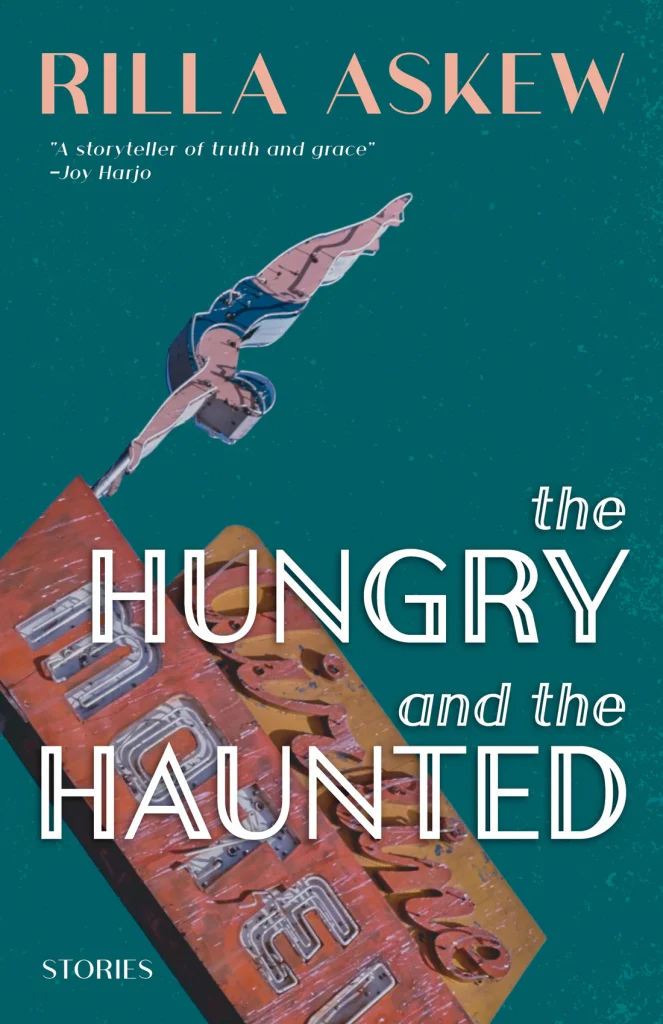by
Rilla Askew
The Hungry and the Haunted is one of those books you want to read right from the title, a title that hits all the harder when you read the back copy and see the stories are set in Oklahoma, land of the Trail of Tears.
The first story, “Solstice (1999),” centers around Daphne, a ten-year-old, and ‘Uncle Oscar,’ who is probably not really her uncle given he is 80.
[It] was a family decision, same as how they got together and decided I’d live with Cecil after Mama died, because Cecil and Sally’s kids were grown and they had the most room. Nobody really wanted to look after Oscar, same as nobody really wanted to look after me, so I sort of took it on as my job to do that. I’d come out to the porch, where he sat most days till it got too hot or too cold, and he’d say, “How you doing this morning, sister?”
This unlikely pair go to the Spiro Mounds Archeological Site, where Oscar proceeds to cut the wire fence and sneak them in to observe the summer solstice there. It is an odd journey, given Oscar’s advanced age and frail condition, made all the more curious by his obvious distaste for the gawking tourists and tourist-guide ranger who he and Daphne sneak around avoiding all day. In typical Askew fashion, it all comes together in the end when Daphne has to go find the ranger.
Further along, at the center of the collection is the “Tahlequa Triptych (1973-1978),” three interconnected stories based in Tahlequa, Oklahoma, home of the Cherokee Nation as well as Northeastern State University.
The first story, “Verdigris,” is heartbreaking. The title comes from the color of Reva’s eyes, a teenager in her last year of high school. Reva bleaches her hair, and appreciates it when two girls call her ‘a skag’—at least now she is visible. Reva tells the choreographer putting on a performance of the Trail of Tears that she is Native American, but we never know if she really is, in the same way that we never knew in the first story if Daphne and Oscar are actually related. Truth, in Askew’s fiction as in life, isn’t found out in the open or in full knowledge, it is only felt in grey, liminal spaces.
In the next story of the triptych, “Hungry,” on Thanksgiving in a bar called Granny’s Attic, white teenage runaway Nikki meets Floyd Sixkiller, a Native American who does not have official tribe recognition. They spend the whole night drinking together, during which Floyd asks Nikki two questions she doesn’t know how to answer, the first of which is, “what do you want to be when you grow up?”
In place of an answer, Nikki asks, “Did you ever feel like you’re living your life backwards?… Like, you know, shit will happen, and you’ll realize later you knew it was going to happen, but you didn’t know you knew till after it happened.” And she then half-tells and half-remembers living on a commune in Sonora, tripping on mescaline, hearing a car horn in the distance and in that instant knowing she is going to return to her mother the next day.
But it didn’t work out at home with her mother—which is why Nikki is in this bar with Floyd in Tahlequa, Oklahoma. Floyd then asks the second question: What is home?
And here it was, the second question she couldn’t answer—one she didn’t even have a flippant quip for. The very word filled her with discomfort, like the jittery nausea she’d felt on the bus ride from California, but the feeling was mixed with a vague, impossible longing, like an ache for something she’d lost but never really had.
Nikki ends up joking how “Home is wherever I drop my backpack!” But Floyd points out that he didn’t ask where home is, he asked what home is. When she demands that he answer his own question, he describes home: “It’s where the Creator set you to be. The trees he set for your people, or the desert where there aren’t any trees. The angle of the moon there. The scent of rain on that earth.”
It takes Nikki some time after this revelation to understand the great gift Floyd has given her in this description, and to see that Oklahoma is not her place. And throughout the collection, every main character seems to struggle with what home means—either desperate to escape small town Oklahoma or, on rare occasions like in Floyd’s case, realizing that Oklahoma in fact is home, even Tahlequah, gritty as it is.
The six stories in this collection are full of beautiful, singular moments, often crystallizing in an instant, such as in Nikki and Floyd’s conversation. This is a book that really must be read, not only to hear the stories that the very soil of Oklahoma can tell, but also to begin to think of the soil on which our own stories are built.
—Hardy Griffin
* * *

